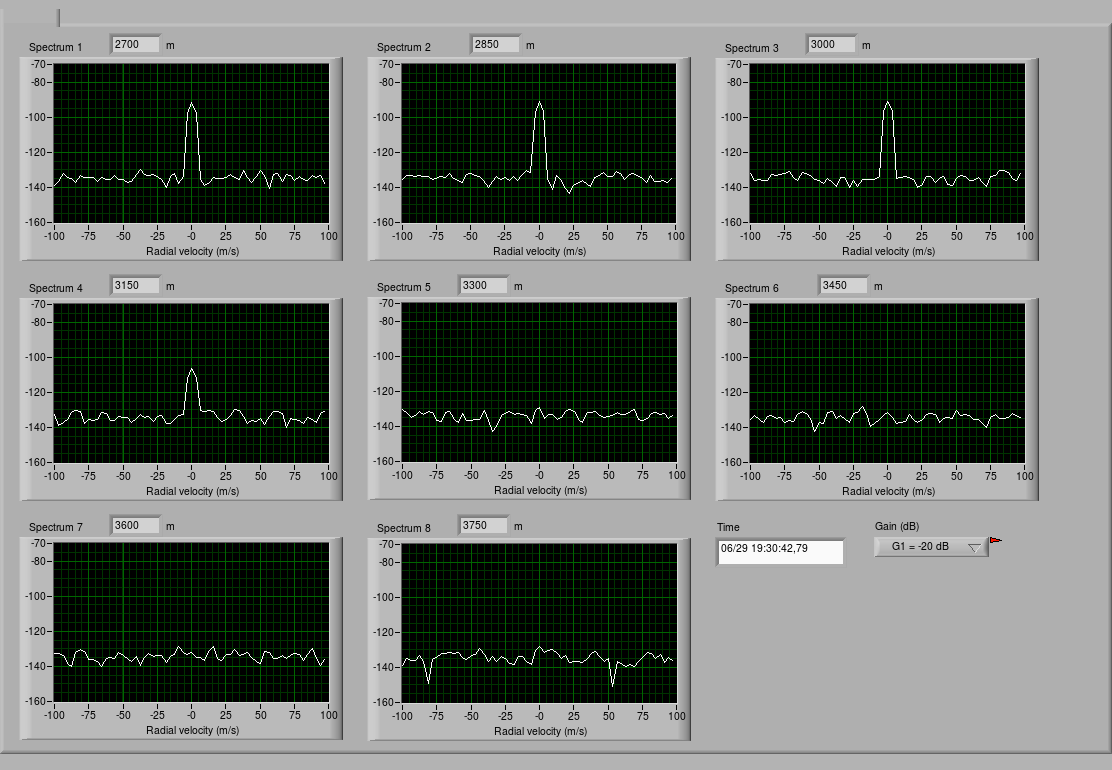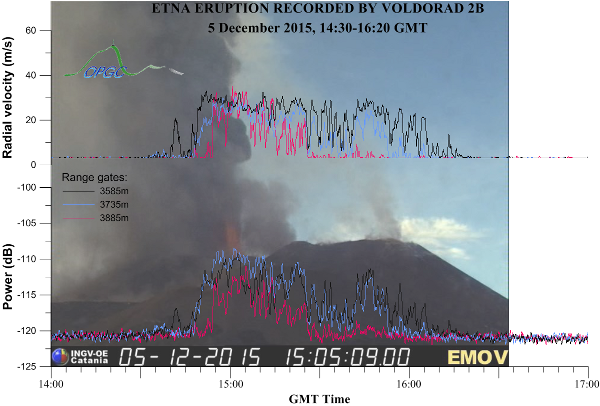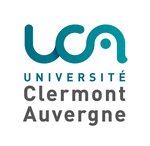You are here : Home |
|
December 2015 Etna eruption (Voragine) Since the reactivation of Voragine and the paroxysmal episode in the night of 3 December 2015, 3 other paroxysmal episodes have occurred at the Voragine crater of Etna, similar to those of 3 December with tall lava fountains and eruption columns several kilometers high. Tephra emissions of all episodes were captured by the OPGC Doppler radar (VOLDORAD 2B) at La Montagnola, operated in collaboration with INGV Catania. On 4 December, one occurred in the morning (09:00-10:15 UTC) and one in the evening between approx. 20:27 and 21:17 UTC. Another paroxysm occurred on 5 December between approx. 14:40 and 16:20 UTC. VOLDORAD is a ressource of the french SNOV (National Service for Observations in Volcanology of INSU-CNRS). The radar data and other radar-derived products are made available by the OPGC in the framework of the EU FP7 MED-SUV program through the VOLDORAD website. December 5 2015 Etna eruption (Voragine)
Volcano Doppler Radar Observation Service
VOLDORAD is a service of the Observatoire de Physique du Globe de Clermont-Ferrand, France. The acronym stands for Volcano Doppler Radar, a set of transportable instruments designed at OPGC, aimed at monitoring and studying explosive volcanic eruptions by pointing directly near the source. The core activity of the VOLDORAD service is to provide the scientific community with observational and processed radar data through data bases from continuous monitoring (Etna, Popocatépetl volcanoes) or punctual measurement campaigns (Etna, Stromboli, Yasur, Arenal, Popocatépetl). In the near future this should be achieved in the framework of SNOV (french CNRS-INSU National Service for Observation in Volcanology), as advised by the SNOV scientific comitee.
More information
Équipe :
Principaux partenaires :
|
|






